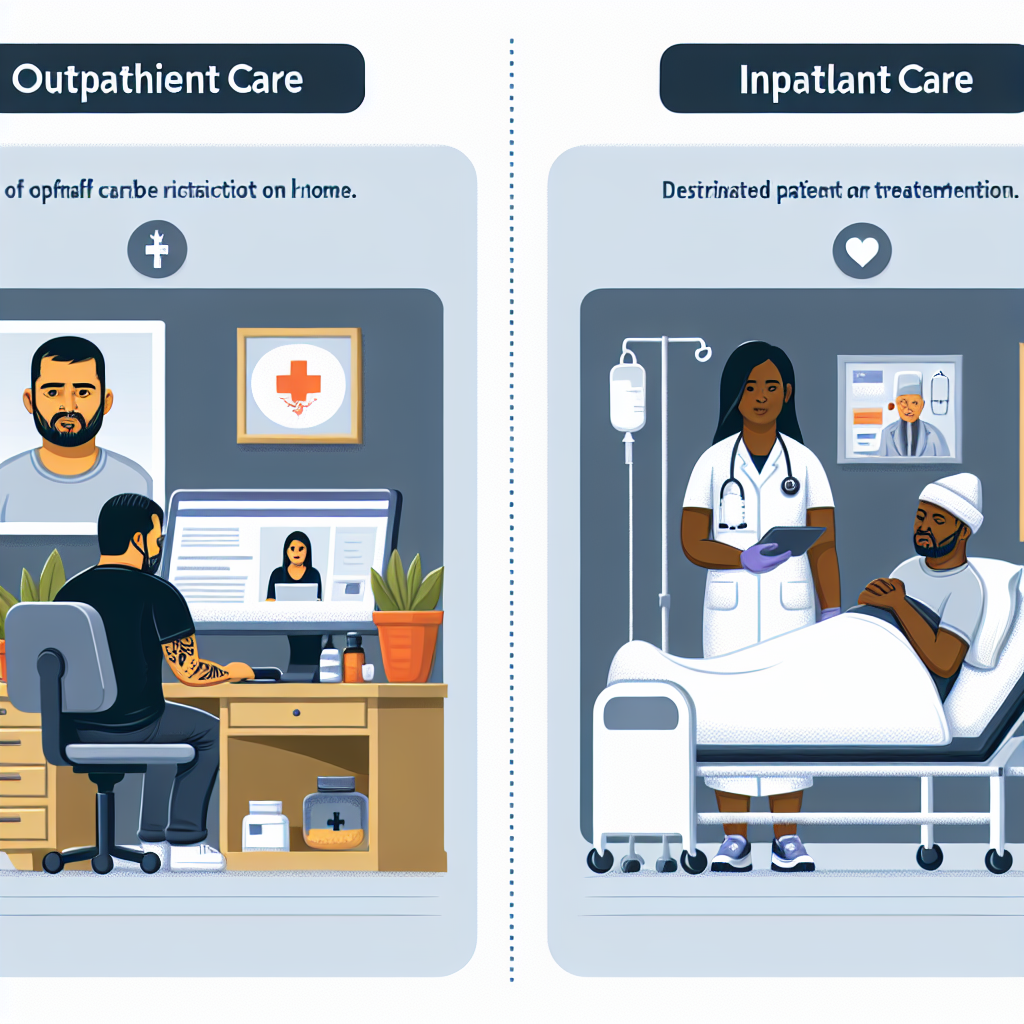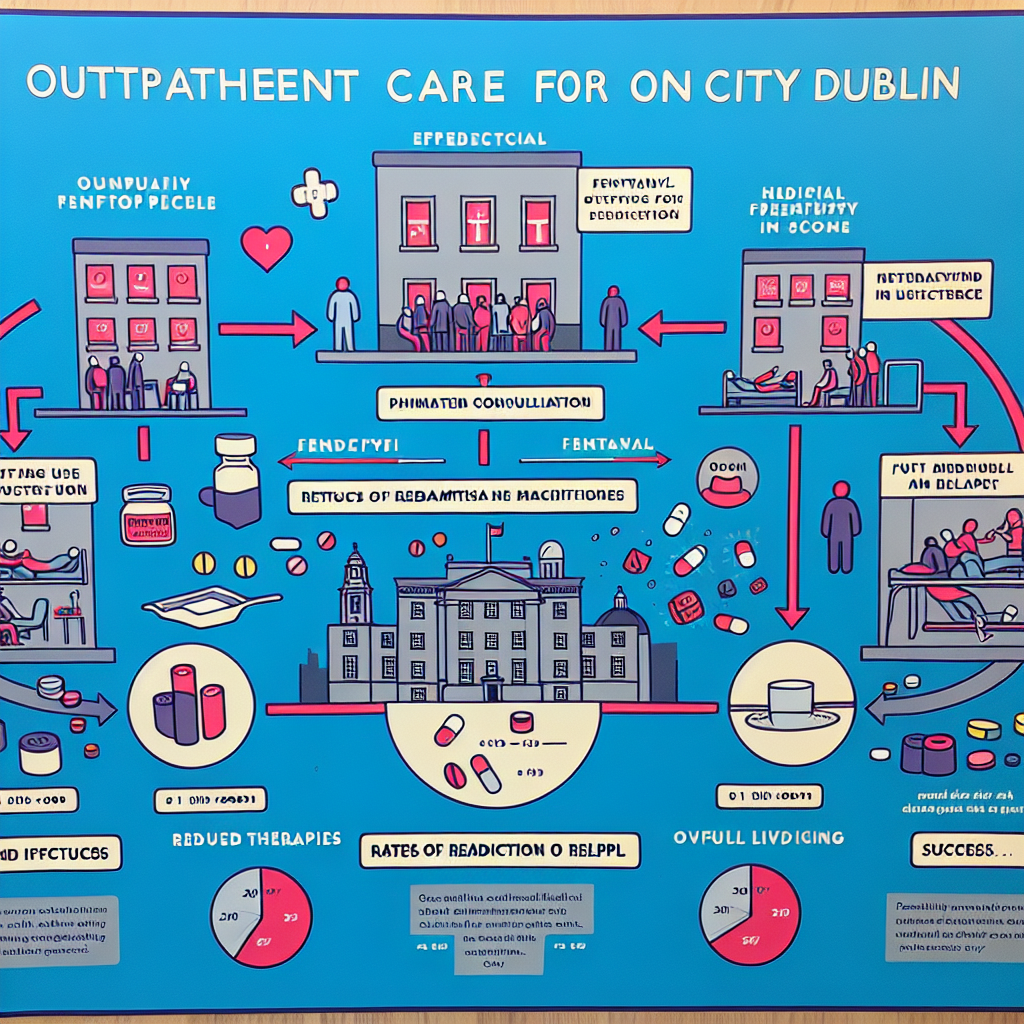-
Table of Contents

“Outpatient vs. Inpatient Care: Navigating the Path to Fentanyl Addiction Recovery”
Introduction
Fentanyl addiction has emerged as a critical public health issue, necessitating effective treatment strategies to combat its pervasive impact. The choice between outpatient and inpatient care for fentanyl addiction is a pivotal decision that can significantly influence recovery outcomes. Outpatient care offers flexibility, allowing individuals to maintain their daily responsibilities while receiving treatment, whereas inpatient care provides a structured, immersive environment with intensive support. This comparison explores the advantages and limitations of both approaches, examining factors such as treatment intensity, accessibility, cost, and the specific needs of individuals struggling with fentanyl addiction. Understanding these differences is essential for tailoring interventions that maximize the chances of successful recovery and long-term sobriety.
Benefits And Drawbacks Of Outpatient Vs. Inpatient Care For Fentanyl Addiction
When grappling with fentanyl addiction, choosing the right treatment approach is crucial for recovery. Both outpatient and inpatient care offer unique benefits and drawbacks, and understanding these can help individuals make informed decisions. Outpatient care, for instance, allows patients to maintain their daily routines while receiving treatment. This flexibility can be particularly beneficial for those who have work, school, or family commitments. By integrating therapy sessions and medical consultations into their everyday lives, patients can apply coping strategies in real-time, fostering a sense of normalcy and continuity.
However, the freedom that outpatient care provides can also be a double-edged sword. The lack of a controlled environment means that individuals may still be exposed to triggers and temptations that could lead to relapse. This is where the structured nature of inpatient care shines. Inpatient programs offer a safe, controlled environment where patients can focus solely on their recovery without external distractions. The immersive nature of inpatient care ensures that individuals receive round-the-clock medical supervision and support, which can be particularly crucial during the initial detoxification phase when withdrawal symptoms are most severe.
Despite the intensive support, inpatient care can be isolating. Being away from loved ones and familiar surroundings for an extended period can be emotionally challenging. Moreover, the cost of inpatient treatment is often higher than outpatient care, which can be a significant barrier for many. On the other hand, outpatient care is generally more affordable and accessible, making it a viable option for those with financial constraints. Additionally, outpatient programs often offer a variety of therapeutic modalities, such as individual counseling, group therapy, and medication-assisted treatment, providing a comprehensive approach to recovery.
Transitioning from one form of care to another can also be a strategic move. For example, starting with inpatient care to stabilize the patient and then moving to outpatient care for continued support can offer the best of both worlds. This blended approach allows individuals to benefit from the intensive support of inpatient care while gradually reintegrating into their daily lives through outpatient services. It’s important to note that the success of either treatment largely depends on the individual’s commitment and the quality of the support system in place.
Family involvement can significantly enhance the effectiveness of both outpatient and inpatient care. In outpatient settings, family members can participate in therapy sessions, providing emotional support and helping to create a conducive environment for recovery at home. In inpatient settings, family visits and family therapy sessions can help rebuild trust and improve communication, laying a strong foundation for the patient’s return home.
Ultimately, the choice between outpatient and inpatient care should be tailored to the individual’s specific needs, circumstances, and the severity of their addiction. Consulting healthcare professionals who specialize in addiction treatment can provide valuable insights and recommendations. While both forms of care have their pros and cons, the most important factor is the individual’s willingness to seek help and commit to the recovery process. With the right support and treatment plan, overcoming fentanyl addiction is not just a possibility but a reachable goal. The journey may be challenging, but with determination and the right resources, a healthier, drug-free life is within reach.
Success Rates: Outpatient Vs. Inpatient Treatment For Fentanyl Addiction
When it comes to treating fentanyl addiction, the choice between outpatient and inpatient care can significantly impact success rates. Understanding the nuances of each treatment option is crucial for individuals seeking recovery and their loved ones. Both outpatient and inpatient care have their unique advantages and challenges, and the success rates can vary depending on several factors, including the severity of the addiction, the individual’s personal circumstances, and the quality of the treatment program.
Outpatient care offers a flexible approach to addiction treatment, allowing individuals to maintain their daily responsibilities while receiving therapy and support. This type of care is particularly beneficial for those with mild to moderate addiction, as it enables them to stay connected with their support network and continue working or attending school. Success rates for outpatient treatment can be quite promising, especially when the program includes comprehensive services such as individual counseling, group therapy, and medication-assisted treatment. The ability to apply coping strategies in real-time, within the context of everyday life, can reinforce the skills learned during therapy sessions.
However, outpatient care may not be suitable for everyone. Individuals with severe fentanyl addiction or those who lack a stable and supportive home environment might struggle with the temptations and triggers present in their daily lives. In such cases, the structure and intensive support provided by inpatient care can be more effective. Inpatient treatment involves residing at a facility for a specified period, typically ranging from 30 to 90 days or longer. This immersive environment allows individuals to focus entirely on their recovery, free from external distractions and influences.
The success rates for inpatient treatment are often higher for those with severe addiction, as the controlled setting minimizes the risk of relapse during the critical early stages of recovery. Inpatient programs offer a comprehensive approach, including medical detoxification, individual and group therapy, and aftercare planning. The round-the-clock support from medical professionals and peers can be instrumental in addressing the physical and psychological aspects of addiction. Moreover, the sense of community and shared experience within an inpatient facility can foster a strong support network, which is essential for long-term recovery.
Transitioning from inpatient to outpatient care can also be a strategic approach to maintaining sobriety. After completing an inpatient program, individuals can continue their recovery journey through outpatient services, which provide ongoing support and accountability. This continuum of care can bridge the gap between the structured environment of inpatient treatment and the challenges of reintegrating into everyday life.
Ultimately, the success rates of outpatient versus inpatient treatment for fentanyl addiction depend on the individual’s unique needs and circumstances. A thorough assessment by addiction specialists can help determine the most appropriate level of care. It is also important to consider the quality of the treatment program, as evidence-based practices and a holistic approach can significantly enhance the chances of successful recovery.
In conclusion, both outpatient and inpatient care have their merits in treating fentanyl addiction. While outpatient care offers flexibility and the opportunity to apply coping strategies in real-life situations, inpatient care provides a structured and supportive environment for those with severe addiction. By understanding the strengths and limitations of each approach, individuals and their families can make informed decisions that pave the way for a successful and lasting recovery.
Q&A
1. **Question:** What are the primary differences in treatment settings between outpatient and inpatient care for fentanyl addiction?
**Answer:** Outpatient care allows patients to live at home and attend treatment sessions at scheduled times, while inpatient care requires patients to reside in a treatment facility for the duration of the program.
2. **Question:** How does the intensity of medical supervision differ between outpatient and inpatient care for fentanyl addiction?
**Answer:** Inpatient care provides 24/7 medical supervision and support, whereas outpatient care offers periodic medical supervision, typically during scheduled visits.
Conclusion
In comparing outpatient and inpatient care for fentanyl addiction, it is evident that both treatment modalities offer distinct advantages and challenges. Inpatient care provides a highly structured environment with 24/7 medical supervision, which is crucial for managing severe withdrawal symptoms and preventing relapse in the early stages of recovery. It is particularly beneficial for individuals with co-occurring mental health disorders or those who lack a supportive home environment. On the other hand, outpatient care offers greater flexibility, allowing individuals to maintain their daily responsibilities such as work or family commitments while receiving treatment. It is generally more cost-effective and can be suitable for those with milder addiction or a strong support system. Ultimately, the choice between outpatient and inpatient care should be tailored to the individual’s specific needs, severity of addiction, and personal circumstances to ensure the best possible outcome in their recovery journey.



